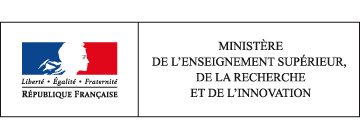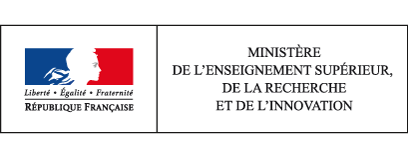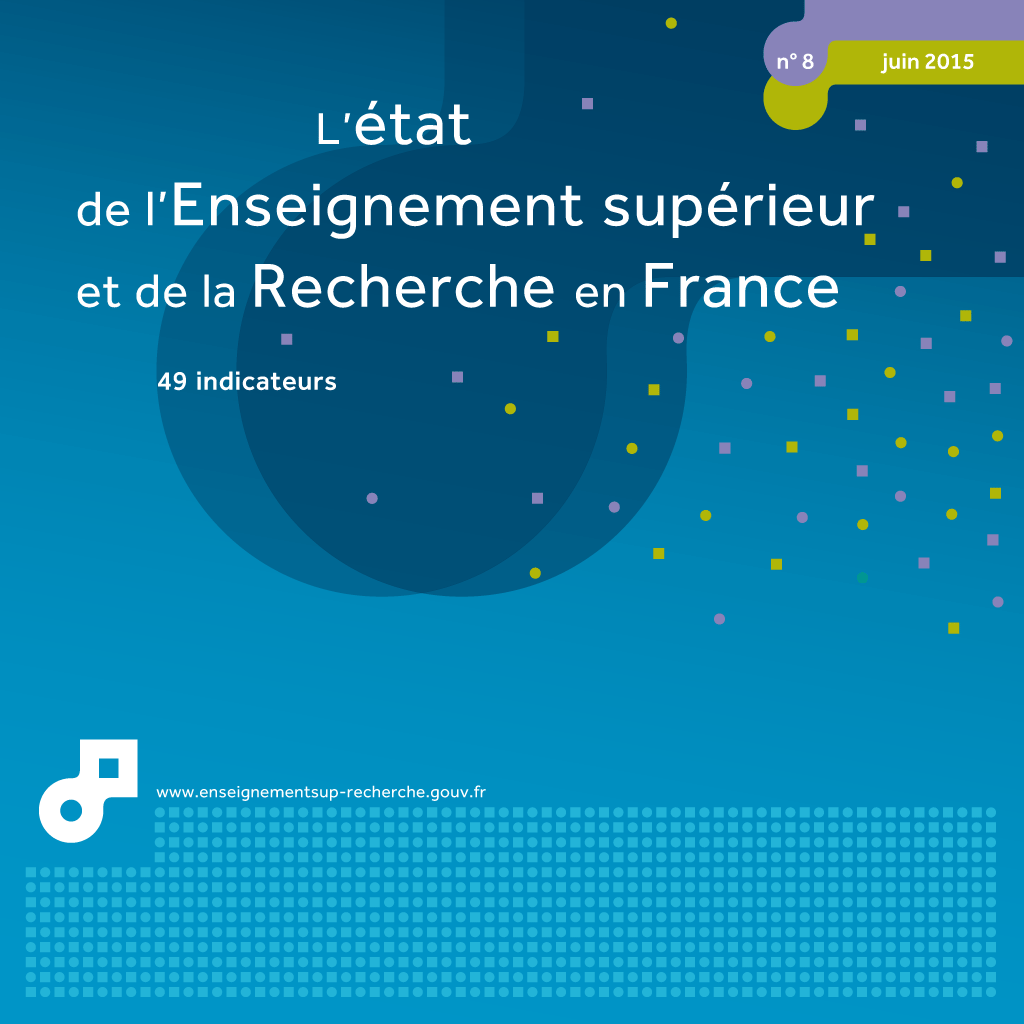17 student trajectories and pass rates at universities
This page has been updated. Read 19. student trajectories and pass rates in university bachelor's degrees, vocational bachelor's degrees and master's degrees in Higher education & research in France, facts and figures 10th edition - June 2017
Slightly fewer students who started the first year of a Bachelor's degree in 2009 obtained their degree in three years, compared with those who went into the first year in 2005 (-1.7%). However, the proportion of those obtaining a Bachelor's degree in 3 or 4 years remained stable at nearly 40%. 47% of students on Master's degree programmes obtained their degree in two years and 57% in three years, an increase of eight points in four years.
A study on the trajectories of a cohort of students who started the first year of a Bachelor's degree (Licence) in the 2009-10 academic year has shown that more than half of them were still enrolled on the Licence programme two years later (table 17.01). A third of them continued into the third year, while less than a quarter repeated the second or sometimes the first year. Four out of ten students were no longer enrolled on a university course by the third year of the study. However, this does not mean that they had stopped studying – they may have moved to an advanced technician’s section (Section de techniciens supérieurs – STS) or left to continue their studies at a school. Very few of them (around 4%) switched to another university course and those that did mostly moved to technology university institutes (Instituts universitaires de technologie – IUT).
The trajectories of students on Licence programmes varied significantly depending on their academic background. Two thirds of students with a general baccalauréat were still on the Licence programme three years after enrolling in the first year and nearly four in ten were enrolled in the third year of a Licence. Students with a technical or vocational baccalauréat were less likely to continue with their Licence (28% and 15% respectively). Only around 11% of those with technical baccalauréats and 4% with vocational baccalauréats enrolled in the third year of a Licence.
The analysis of the trajectories of students enrolled on Licence programmes shows that the number of students obtaining their degree in 3 years fell from 28% to 26% between the 2005 and 2009 cohorts. This fall was due to an increase in the proportion of students with technical or vocational baccalauréats and a drop in the pass rate for those with general baccalauréats. However, the number of students obtaining their Licence after four years remained stable at nearly 40%, as did the number of those passing after five years (44%) (table 17.02). The results varied significantly depending on the students' academic backgrounds: 33% of those with general baccalauréats obtained their Licence in three years, in comparison with only 7% and 3% (respectively) of those with technical and vocational baccalauréats. At the end of 5 years, these rates were 53%, 17% and 5% respectively.
The pass rate for students enrolled on vocational Bachelor's degree (Licence professionnelle - LP) programmes was high, with 88% obtaining their diploma in one year (chart 17.03). Those who were awarded technology university diplomas (Diplôme universitaire de technologie – DUT) achieved the best results, while those who had returned to studying after not being in education the previous year did the least well, although the pass rate still remained high (85%). At the end of two years, the pass rate for LPs rose to 90%.
Nearly three quarters of those who were awarded a general Licence went on to continue their university studies with a Master's degree (chart 17.04), although the situation varied between subject areas. 87% of law graduates and nearly 80% of science graduates went on to start a Master's degree. However, the proportion of students going on to study for a Master's degree was lower in other subject areas (between 64 and 71%).
Of those students who enrolled in the first year of a Master's degree in the 2009-10 academic year, 55% continued into the second year and 16% repeated the first year (diagram 17.05). Others left the Master's degree programme, whether they had passed the first year or not. Some (6%) switched to different university courses, but most of them (23%) left university, either continuing their studies by different means or doing something else entirely. In total, 47% of the students who initially enrolled on Master's degree programmes obtained their degree in two years. 57% obtained their degree in three years, an increase of 8 points in comparison with those who had enrolled on the first year of a Master's degree programme in the 2005-06 academic year.
How to cite this paper :
close
Key figures
Whole of France
Whole of France
Whole of France
Whole of France
Whole of France
Whole of France
Whole of France
Whole of France
17.01 Progression by the third year of students who started the first year of a Bachelor's degree in 2009-2010, broken down by academic background (as a %)
62.9% of students with a general baccalauréat were still enrolled on a Bachelor's degree programme by the third year of monitoring of this cohort. 37.8% were enrolled on the third year of a Bachelor's degree programme (either general or vocational).
You can embed this table to your website or your blog by copying the HTML code and pasting it into the source code of your website / blog:
close
17.02 Changes in pass rates for Bachelor's degree programmes in three, four and five years (as a %)
1 The data for 2013 are not available, as results for this session have not yet been published.
You can embed this table to your website or your blog by copying the HTML code and pasting it into the source code of your website / blog:
close
17.03 Proportion of students who enrolled in 2010-2011 and obtained a vocational Bachelor's degree in 1 or 2 years, broken down by the course they had taken the previous year (as a %)
You can embed this chart to your website or your blog by copying the HTML code and pasting it into the source code of your website / blog:
close
17.04 Proportion of students awarded a general Bachelor's degree in 2011-2012 who went on to do a Master's degree or Master of Education, broken down by subject area of their Bachelor's degree (as a %)
You can embed this chart to your website or your blog by copying the HTML code and pasting it into the source code of your website / blog:
close
17.05 Progression of students who enrolled on the first year of a Master's degree programme in 2009-2010 (as a %)

You can embed this diagram to your website or your blog by copying the HTML code and pasting it into the source code of your website / blog:
close
Related statistical publications
 Note flash SIES 03 - Study paths and student success in university diplomas: indicators for the 2012 session - Samuel Fouquet - August 2014
Note flash SIES 03 - Study paths and student success in university diplomas: indicators for the 2012 session - Samuel Fouquet - August 2014 In addition, these indicators are broken down by university. This information, published here for the second year running, will be disseminated every year. Results from the 2013 session should be available in February 2015.

 Note d'information SIES 14.05 - Student success according to financial difficulties and student allowances received - Nadine Laïb - July 2014
Note d'information SIES 14.05 - Student success according to financial difficulties and student allowances received - Nadine Laïb - July 2014 For students of an equivalent academic level, those experiencing most financial difficulties are more likely to fail than the others. A study allowance reduces this risk of failure significantly.

 Note d'information SIES 13.10 - Success and failure in first cycle programmes - Samuel Fouquet - November 2013
Note d'information SIES 13.10 - Success and failure in first cycle programmes - Samuel Fouquet - November 2013 
 Note d'information SIES 13.02 - Study paths and success in Bachelor's and Master's degrees at university - Samuel Fouquet - April 2013
Note d'information SIES 13.02 - Study paths and success in Bachelor's and Master's degrees at university - Samuel Fouquet - April 2013 Translation
 Etat de l'enseignement supérieur et de la rechercheL'état de l'Enseignement supérieur et de la Recherche en France n°8 - juin 2015
Etat de l'enseignement supérieur et de la rechercheL'état de l'Enseignement supérieur et de la Recherche en France n°8 - juin 201517 - les parcours et la réussite en Licence, Licence professionnelle et Master à l'université - Samuel Fouquet






